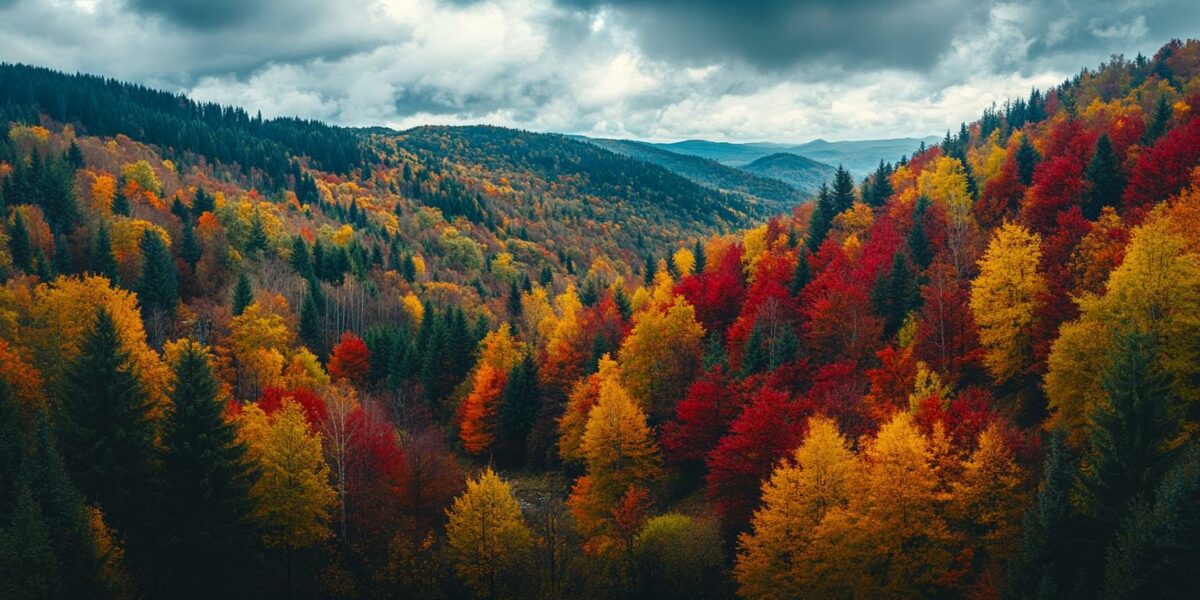How Climate Change Impacts Fall Foliage Timing
Trips to witness the stunning fall foliage are becoming increasingly unpredictable due to climate change. The delicate balance of temperature and precipitation essential for vibrant autumn colors is being disrupted by our warming planet. This shift could mean fewer brilliant displays of fall colors in the future.
One major factor is the lengthening of summers. Trees depend on cooler temperatures to begin the process of shedding their chlorophyll, revealing the carotenoids and anthocyanins that create the beloved autumn palette. But with longer summers, this process is delayed, and the vibrant colors appear later.
Research by scientists like Mukund Rao from Columbia University indicates that these changes are already observable. In regions like the northeastern United States, trees are maintaining their green hues longer into the fall, affecting popular foliage destinations such as New England and upstate New York.
Using a network of PhenoCams, researchers monitor these changes. These time-lapse cameras, installed on high vantage points, help track the seasonal transitions in vegetation, providing invaluable data on the timing of leaf color changes and drop.
The Role of Summer Precipitation in Fall Foliage Vibrancy
Summer rainfall is crucial for the vibrancy of fall foliage. Trees need ample water to produce the sugars that result in eye-catching autumn displays. Unfortunately, climate change-induced droughts can lead to less striking colors.
In regions where summer droughts are becoming more prevalent, trees experience significant stress. This stress often results in leaves that drop early, bypassing the vibrant color stage and leading to a less spectacular autumn.
As Mukund Rao explains, in dry years, trees are more likely to shed their leaves quickly without displaying the full spectrum of fall colors. This means that the glorious reds, oranges, and yellows could be replaced by a more muted, brownish landscape.
Key factors affecting fall foliage include:
- Temperature fluctuations
- Precipitation patterns
- Overall climate health in the region
Shortened Leaf-Viewing Seasons Due to Climate Change
While the timing of leaf drop remains consistent due to unchanged daylight hours, the period for viewing fall foliage is shrinking. Higher temperatures delay the onset of color change, but the leaves still drop at the same time each year.
As a result, the window for experiencing peak autumn colors is becoming narrower. This rapid transition means fewer days to enjoy the full spectrum of fall’s beauty before the leaves turn brown and fall off.
According to Rao, the transition from green to vibrant colors is happening faster. This hastened process shortens the prime viewing period, making it more challenging for foliage enthusiasts to catch the season at its best.
Travelers looking to plan a foliage trip need to be more flexible and attentive to weather patterns and foliage reports. The interactive prediction map by SmokyMountains.com is a valuable tool for gauging the best times to see fall colors in different regions.
Planning for Future Fall Foliage Trips
Future trips to see fall foliage will require more careful planning. The changing climate means that traditional timelines for peak colors may no longer apply. Travelers will need to stay informed and adjust their plans accordingly.
With fall colors emerging later but leaves dropping at their usual time, the window for optimal leaf viewing is shrinking. Flexibility and attentiveness to recent weather conditions are now more critical than ever for planning a successful trip.
It’s essential to consider the latest foliage reports and prediction maps when selecting travel dates. By staying updated on these resources, visitors can maximize their chances of experiencing the autumn display at its peak.
In summary, climate change is significantly affecting fall foliage, making it crucial for travelers to adapt their plans. By understanding these impacts and staying informed, they can still enjoy the stunning autumn colors, albeit with a bit more effort and preparation.



zoey4
Excuse me, but what are carotenoids and anthocyanins exactly? 😅
harper
Interesting read, but I hope this doesn’t mean the end of fall festivals and leaf-peeping tours.
mason
Can you provide more information on the PhenoCams and where to find their data?
hannah
Thanks for the detailed explanation. I’ll definitely check out those PhenoCams.
faith8
Oh no, another thing for climate change to ruin! What’s next, spring flowers? 🙄
Rosie_Whisperer
Great article! It’s important to raise awareness about these subtle changes.
claire
Wait, does this mean we won’t have those beautiful red maple leaves in New England soon?
leahenigma7
How can we help mitigate this issue? Any suggestions for individuals?
ArianaWhisperwind
So sad to hear about this 😢. Fall is my favorite season because of the colors.
Joseph
Wow, didn’t realize climate change was affecting fall foliage too. Thanks for the info!